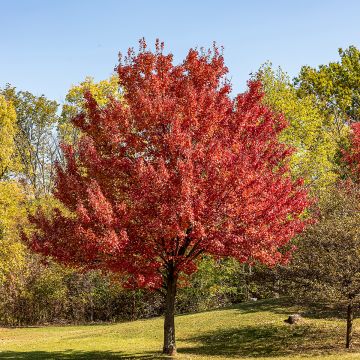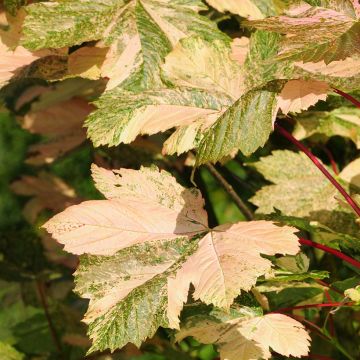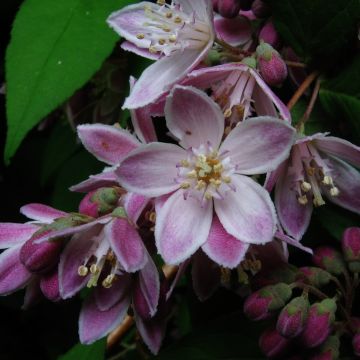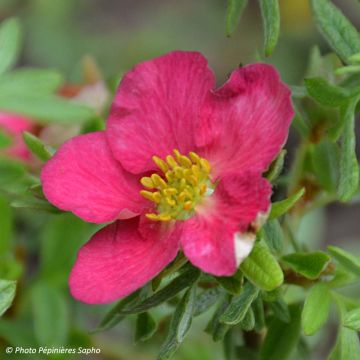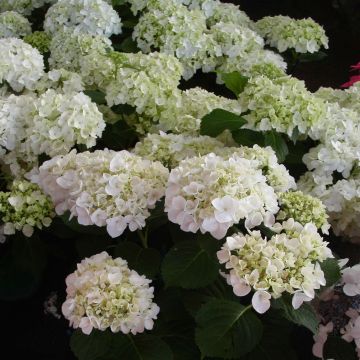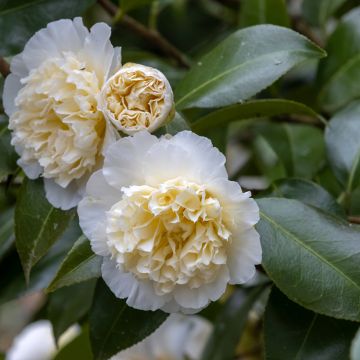

Acer negundo Flamingo - Maple
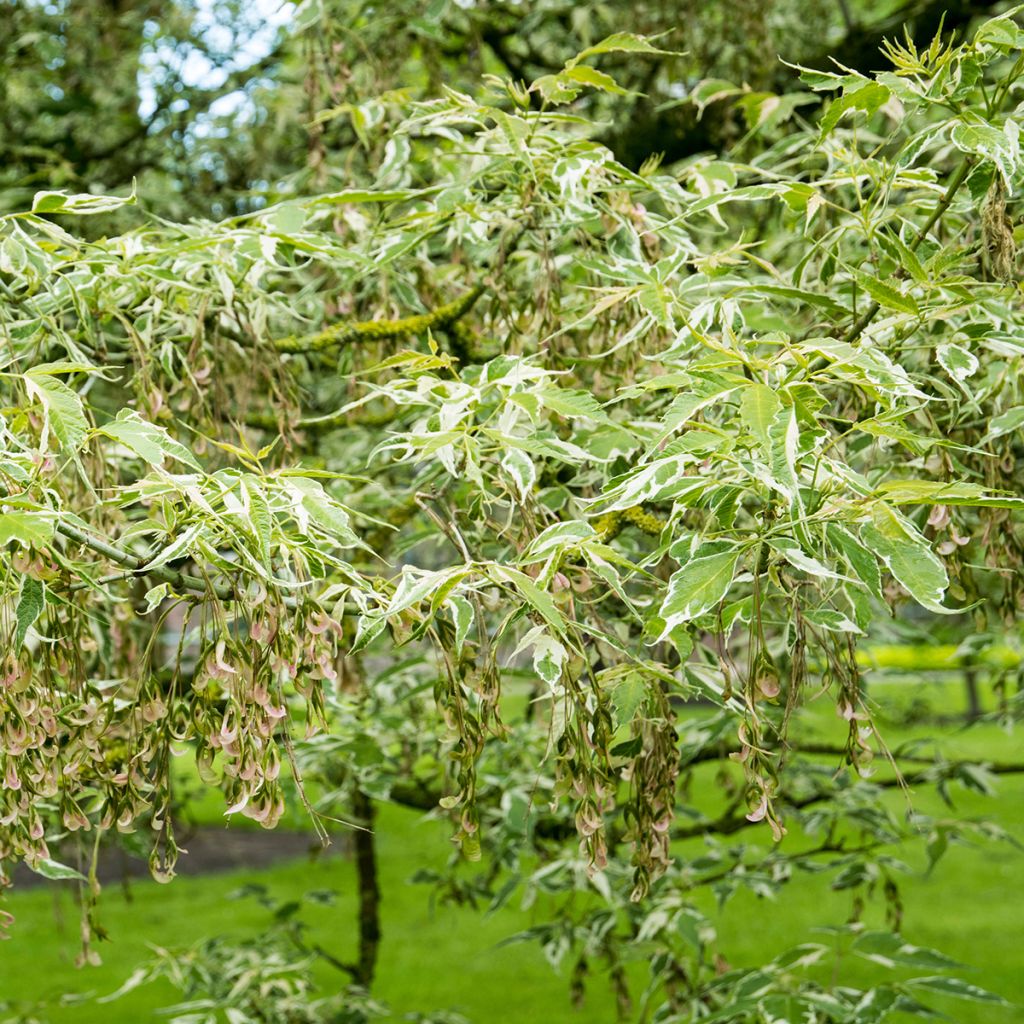

Acer negundo Flamingo - Maple


Acer negundo Flamingo - Maple


Acer negundo Flamingo - Maple
Acer negundo Flamingo - Maple
Acer negundo Flamingo
Box Elder, Ash-leaved Maple, Manitoba Maple
This item cannot be shipped to the selected country
Delivery charge from €5.90
Oversize package delivery charge from €6.90
Delivery to Corse prohibited
More information
Schedule delivery date,
and select date in basket
This plant carries a 24 months recovery warranty
More information
We guarantee the quality of our plants for a full growing cycle, and will replace at our expense any plant that fails to recover under normal climatic and planting conditions.
From €5.90 for pickup delivery and €6.90 for home delivery
Express home delivery from €8.90.
Oversize package: home delivery by special carrier from €6.90 per order..
Express home delivery from €8.90.
Delivery to Corse prohibited: UE law prohibits the import of this plant from mainland France to Corse as part of the fight against Xylella fastidiosa. Please accept our sincere apologies.
More information

Does this plant fit my garden?
Set up your Plantfit profile →
Description
The Acer negundo Flamingo is a very beautiful variety of ash-leaved maple, a remarkable small tree with extremely bright variegated foliage of white and pink on a green background, which turns beautiful golden colours in autumn. Often used in hedges, it also makes a lovely specimen to plant in isolation in a small garden. As it tolerates pruning well, which promotes the appearance of colourful new shoots, it can easily be grown as a large bush. Not demanding, fast-growing, and hardy, it adapts to most soils and climates. This wonderful maple prefers to be planted in partial shade to protect its foliage from sunburn.
The Acer negundo, also known as Boxelder, Ash-leaved Maple, or Manitoba Maple, belongs to the family Sapindaceae. It is native to western United States and Virginia, but can be found as far south as Florida as well as in Canada and Quebec. It is considered an invasive species, naturalized in France, particularly in Corsica where it is subject to special monitoring. This robust light-loving species prefers areas near watercourses and wetlands, but can tolerate dry summers once established. It prefers clay-limestone soils, but the plant adapts to a wide range of soils that are not too acidic. In nature, Acer negundo forms a large crown tree, reaching a height of 15m (49ft). The 'Flamingo' variety, on the other hand, rarely exceeds 7m (23ft) in height and width if not pruned. It can easily be maintained at a height of 3m (10ft) through regular pruning. This small tree has a relatively short and stocky trunk, or sometimes multiple trunks, with low branches if it has enough space. If surrounded by other shrubs or trees, it will tend to grow taller in order to seek light. Its natural habit is spreading, slightly irregular, supported by thin and brittle branches. Its rough, ash-grey bark cracks over time, taking on a darker grey tone. The young twigs are green-blue and pruinose. The leaves, 5 to 10cm (2 to 3.9in) long, are divided into 3 to 9 ovate and pointed leaflets with very serrated edges. They are variegated with white and pink on a green background, or sometimes completely white. They turn yellow before falling. The inconspicuous flowering occurs in April-May, at the same time or slightly before the young leaves develop. It produces clusters of female flowers that are slightly yellowish green, in thick pendulous clusters, and male flowers that are red, arranged in long filamentous racemes. The flowers are followed by clusters of winged seeds called samaras, measuring 3 to 5cm (2in) in length. The shrub is capable of flowering and fruiting from the age of 3 years.
The Acer negundo Flamingo needs a sheltered location away from strong winds, these are the only requirements of this beautiful, small light-loving tree. It is ideal at the base of large trees to create a medium-sized screen or to brighten up a too-green corner of the garden. It requires less water than the 'Hakuro Nishiki' willow, but plays a similar role in garden ornamentation. Once well established, it will thrive without additional watering in regions where summers can be somewhat dry. For example, it can be paired with a purple hazel or a Black Lace elderberry, as their dark foliage will beautifully complement its extremely bright foliage. It will also look great as a standalone tree in a small garden.
TIP: Remove entirely green branches (suckers) that detract from its natural habit.
Report an error about the product description
Acer negundo Flamingo - Maple in pictures
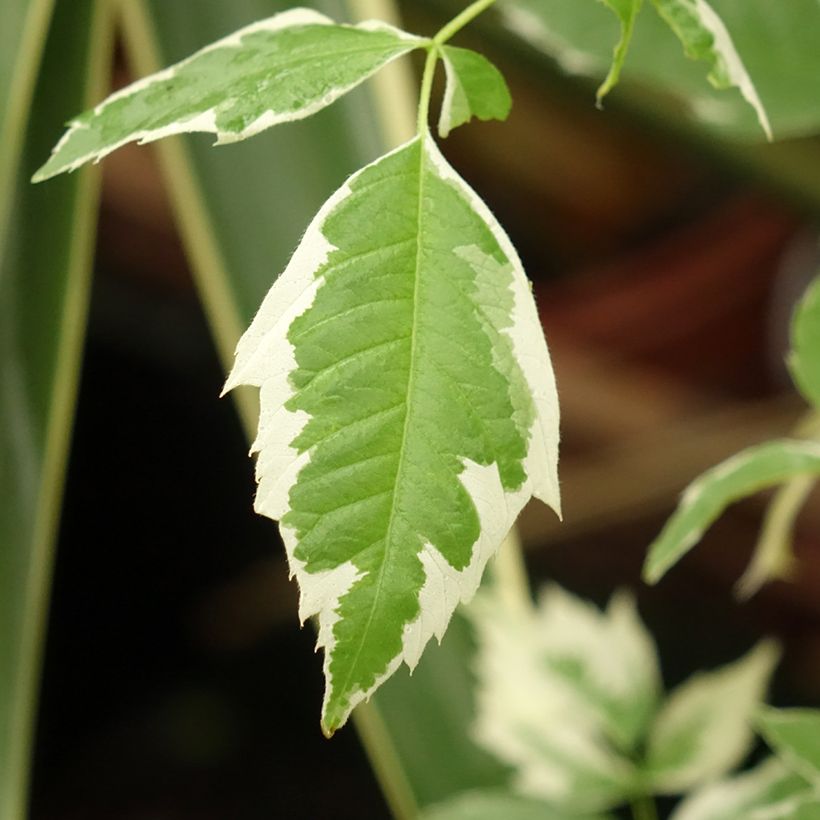

Plant habit
Flowering
Foliage
Botanical data
Acer
negundo
Flamingo
Aceraceae
Box Elder, Ash-leaved Maple, Manitoba Maple
Cultivar or hybrid
Other Acer - Maple tree
Planting and care
Acer negundo 'Flamingo' should be planted in spring or autumn in any fertile, deep and fresh soil, in a sunny but not scorching position (morning sun) or partially shaded to avoid sunscorch. It is an accommodating bush, which tolerates limestone and fairly dry soils in summer, once it is well established after 2 or 3 years of cultivation. However, it does not appreciate the chlorine content in tap water much: to water your young Flamingo, prepare 1 or 2 watering cans in advance, a few hours are enough for the majority of the chlorine content in the water to evaporate. Very acidic soils should be avoided, and ericaceous soil should be avoided. Cold is not a problem. Beware of strong winds, as its wood is brittle. Keep the soil moist during the first two summers following planting. Mulching can be beneficial to maintain good soil moisture in dry regions. Pruning is necessary for young plants, and then every 3 years to balance the branches and maintain a harmonious habit. Do not prune after December as sap rises very early.
Planting period
Intended location
Care
-
, onOrder confirmed
Reply from on Promesse de fleurs
Hedge shrubs
Haven't found what you were looking for?
Hardiness is the lowest winter temperature a plant can endure without suffering serious damage or even dying. However, hardiness is affected by location (a sheltered area, such as a patio), protection (winter cover) and soil type (hardiness is improved by well-drained soil).

Photo Sharing Terms & Conditions
In order to encourage gardeners to interact and share their experiences, Promesse de fleurs offers various media enabling content to be uploaded onto its Site - in particular via the ‘Photo sharing’ module.
The User agrees to refrain from:
- Posting any content that is illegal, prejudicial, insulting, racist, inciteful to hatred, revisionist, contrary to public decency, that infringes on privacy or on the privacy rights of third parties, in particular the publicity rights of persons and goods, intellectual property rights, or the right to privacy.
- Submitting content on behalf of a third party;
- Impersonate the identity of a third party and/or publish any personal information about a third party;
In general, the User undertakes to refrain from any unethical behaviour.
All Content (in particular text, comments, files, images, photos, videos, creative works, etc.), which may be subject to property or intellectual property rights, image or other private rights, shall remain the property of the User, subject to the limited rights granted by the terms of the licence granted by Promesse de fleurs as stated below. Users are at liberty to publish or not to publish such Content on the Site, notably via the ‘Photo Sharing’ facility, and accept that this Content shall be made public and freely accessible, notably on the Internet.
Users further acknowledge, undertake to have ,and guarantee that they hold all necessary rights and permissions to publish such material on the Site, in particular with regard to the legislation in force pertaining to any privacy, property, intellectual property, image, or contractual rights, or rights of any other nature. By publishing such Content on the Site, Users acknowledge accepting full liability as publishers of the Content within the meaning of the law, and grant Promesse de fleurs, free of charge, an inclusive, worldwide licence for the said Content for the entire duration of its publication, including all reproduction, representation, up/downloading, displaying, performing, transmission, and storage rights.
Users also grant permission for their name to be linked to the Content and accept that this link may not always be made available.
By engaging in posting material, Users consent to their Content becoming automatically accessible on the Internet, in particular on other sites and/or blogs and/or web pages of the Promesse de fleurs site, including in particular social pages and the Promesse de fleurs catalogue.
Users may secure the removal of entrusted content free of charge by issuing a simple request via our contact form.
The flowering period indicated on our website applies to countries and regions located in USDA zone 8 (France, the United Kingdom, Ireland, the Netherlands, etc.)
It will vary according to where you live:
- In zones 9 to 10 (Italy, Spain, Greece, etc.), flowering will occur about 2 to 4 weeks earlier.
- In zones 6 to 7 (Germany, Poland, Slovenia, and lower mountainous regions), flowering will be delayed by 2 to 3 weeks.
- In zone 5 (Central Europe, Scandinavia), blooming will be delayed by 3 to 5 weeks.
In temperate climates, pruning of spring-flowering shrubs (forsythia, spireas, etc.) should be done just after flowering.
Pruning of summer-flowering shrubs (Indian Lilac, Perovskia, etc.) can be done in winter or spring.
In cold regions as well as with frost-sensitive plants, avoid pruning too early when severe frosts may still occur.
The planting period indicated on our website applies to countries and regions located in USDA zone 8 (France, United Kingdom, Ireland, Netherlands).
It will vary according to where you live:
- In Mediterranean zones (Marseille, Madrid, Milan, etc.), autumn and winter are the best planting periods.
- In continental zones (Strasbourg, Munich, Vienna, etc.), delay planting by 2 to 3 weeks in spring and bring it forward by 2 to 4 weeks in autumn.
- In mountainous regions (the Alps, Pyrenees, Carpathians, etc.), it is best to plant in late spring (May-June) or late summer (August-September).
The harvesting period indicated on our website applies to countries and regions in USDA zone 8 (France, England, Ireland, the Netherlands).
In colder areas (Scandinavia, Poland, Austria...) fruit and vegetable harvests are likely to be delayed by 3-4 weeks.
In warmer areas (Italy, Spain, Greece, etc.), harvesting will probably take place earlier, depending on weather conditions.
The sowing periods indicated on our website apply to countries and regions within USDA Zone 8 (France, UK, Ireland, Netherlands).
In colder areas (Scandinavia, Poland, Austria...), delay any outdoor sowing by 3-4 weeks, or sow under glass.
In warmer climes (Italy, Spain, Greece, etc.), bring outdoor sowing forward by a few weeks.


































